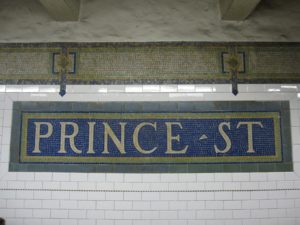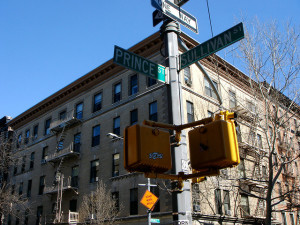On January 14, 2022, Hermès filed a trademark infringement suit against artist Mason Rothschild, claiming that by selling “MetaBirkins” NFTs, Rothschild infringes and dilutes the HERMÈS trademark. Defendant filed a motion to dismiss on February 9, claiming that the First Amendment gives him the right to sell the NFTs. The case is Hermès International, et al. v. Mason Rothschild, 1:22-cv-00384 (SDNY).

The facts
NFTs (non-fungible tokens) are unique digital assets. Their authenticity and uniqueness are guaranteed by a blockchain from their creation through transfer of ownership, as the blockchain also record the transfers. As such, NFTs are suited to the art market, and NFTs are popular and sometime expensive. A NFT created by digital artist Beeple sold in auction in March 2021 for 69 million USD.
Hermès is a luxury house having its headquarters in Paris. One of its most famous sacs is the Birkin, named after British actress and singer Jane Birkin. The Birkin bag is a bigger version of the Kelly Bag, itself named after Grace Kelly, the American actress who became Princess of Monaco.
Mason Rothschild is an artist living in California. Last May, he created a “Baby Birkin” NFT, the digital image of a 40-week-old fetus gestating inside a Hermès Birkin bag. The NFT originally sold for 23,000 USD and was resold for 47,000 USD. Rothschild then created the MetaBirkins.com website, which features and sells “a collection of 100 unique NFTs created with faux fur in a range contemporary color and graphic executions.” The complaint alleges that Mason Rothschild “first began advertising the METABIRKINS NFTS under The METABIRKINS trademarks on December 2, 2021, at Art Basel Miami.
A BIRKIN bag may be considered by some as a work of art, at least as a highly collectible item: a bag made from crocodile skin sold at auction in 2016 for HKD 2,320,000 (more or less USD 300,000.00). MetaBirkins are valuable as well: one sold in February 2022 for 3.5 Ether, that is, more or less USD 10,500.
The C&D letter
On December 16, 2022, Hermès International sent a Cease-and-Desist letter (C&D) to Mason Rothschild and carbon copied the OpenSea platform, on which the NFTs were sold. Hermès asked the artist to cease using commercially the Hermès trademarks. Indeed, Hermès owns, among others, U.S. trademark registrations for HERMÈS, BIRKIN, and for the configuration of the Birkin handbag.
The C&D claimed that Mason Rothschild was identifying the NFTs he is selling by using the BIRKIN trademark and that he “employ(s) the HERMÈS trademark to advertise and promote the sale of the Birkin NFTs…”. Hermès also claimed that this use of the marks may dilute them.
Disclaimer is not enough
After receiving the C&D, as alleged in the complaint, the MetaBirkins.com website was updated to add a disclaimer stating: “We are not affiliated, associated, authorized, endorsed, or in any way officially connected with HERMES, or any of its subsidiaries or affiliates. The official HERMES website can be found at https://www.hermes.com.” The complaint alleges that the disclaimer “unnecessarily” linked to the official Hermes website and “capitalizes the HERMÈS mark” and that “Defendant’s uses of the HERMÈS Mark in conjunction with his uses of the BIRKIN Mark, and the display of the METABIRKINS bags, serves only to create a confusing impression among consumers as to the Hermès’ sponsorship of the METABIRKINS NFTs or the METABIRKINS website.”
The complaint
OpenSea took the NFTs down. Mason Rothschild then sold the MetaBirkins on another platforms. As Mason Rothschild had not taken the MetaBirkins down, Hermès filed a trademark infringement suit on January 14, 2022, in the federal court of the Southern District of New York. The complaint includes claims of false designation of origin, trademark dilution, and cybersquatting (claiming that <metabirkins.com> is infringing and confusingly similar to the BIRKIN mark).
In its complaint, Hermès described Defendant as “a digital speculator who is seeking to get rich quick by appropriating the brand METABIRKINS for use in creating, marketing, selling and facilitating the exchange of [NFTs]”.
Hermès claimed that the name MetaBirkin is formed by merely adding “the generic prefix “meta” to the famous trademark Birkin.” Hermès has not registered METABIRKIN as a trademark. Other companies have filed trademark registration applications for trademarks protecting their marks in the meta universe, such as McDonald’s who filed in February 2022 several meta-related trademarks (for instance, MCDONALD’s in Class 43 for “Operating a virtual restaurant featuring actual and virtual goods, operating a virtual restaurant online featuring home delivery”).
The motion to dismiss
On February 9, 2022, Mason Rothschild filed a motion to dismiss, arguing that the trademark infringement claim must be dismissed under Rogers v. Grimaldi. In this case, the Second Circuit held that the Lanham Act must be broadly interpreted in cases when the allegedly infringing product is an artistic expression. Under Rogers, the Lanham Act:
“should be construed to apply to artistic works only where the public interest in avoiding consumer confusion outweighs the public interest in free expression. In the context of allegedly misleading titles using a celebrity’s name, that balance will normally not support application of the Act unless the title has no artistic relevance to the underlying work whatsoever, or, if it has some artistic relevance, unless the title explicitly misleads as to the source or the content of the work.”
First prong of the Rogers test: artistic relevance
Use of the mark by defendant is protected under the Rogers test unless such use has no artistic relevance to the underlying work whatsoever.
The motion to dismiss argues it does, pointing out that the bags are “depicted as fur covered… [to] commen[t] on the animal cruelty inherent in Hermès’manufacture of its ultra-expensive leather handbags” and further argues that “[t]he First Amendment guarantees [Defendant]’s rights to respond in the marketplace of ideas to the inescapable corporate brand message by which we are bombarded every day, virtually everywhere we look.”
Before Hermès filed its suit, Mason Rothschild had posted on social media a response to both Hermès and Open Sea, writing that “… the First Amendment gives [him] every right to create and based on [his] interpretations of the world around [him].” He also argued that the NFTs he sells “are also a commentary on fashion’s history of animal cruelty, and its current embrace of fur-free initiatives and alternative textiles.” Jane Birkin had asked Hermès a few years ago to stop using her name for the bag after a video released by People for the Ethical Treatment of Animals showing reptiles being skinned or sawed open alive on farms which supplied luxury brands, including Hermès. The parties settled after Hermès showed that the incident was a unique occurrence.
The motion to dismiss argues that the NFTs are “depicted as fur covered… [to] commen[t] on the animal cruelty inherent in Hermès ’manufacture of its ultra-expensive leather handbags” and further argues that “[t]he First Amendment guarantees [Defendant]’s rights to respond in the marketplace of ideas to the inescapable corporate brand message by which we are bombarded every day, virtually everywhere we look.” As such, the Metabirkins could also be considered a parody. The motion to dismiss cites the SDNY Vuitton v. My Other Bag case, where the court found that fabric totes with drawings of famous bags were not infringing nor diluting the Louis Vuitton marks, as they were a parody. Hermès was not a plaintiff, but could have been, as one tote showed a drawing of the Hermès Kelly bag.
Second prong of the Rogers test: not explicitly misleading as to the source
The second prong of the Rogers test is determining whether use of the mark is not explicitly misleading as to its source. The Rogers case was about the title of the Fellini movie Ginger and Fred. The Second Circuit distinguished cases where the title of the product would be an endorsement, giving as example “Jane Fonda’s Workout” (the case is from 1989…). Such titles would be protected by the Lanham Act. However, as explained by the Second Circuit, “Many titles… include a well-known name without any overt indication of authorship or endorsement — for example, the hit song “Bette Davis Eyes,” and the … film “Come Back to the Five and Dime, Jimmy Dean, Jimmy Dean.” Defendant argues that the website clearly identifies that the MetaBirkins are works of art.
Rogers would likely guarantee the motion to dismiss to be granted if Jane Birkin, not Hermès, was the Plaintiff, or if the case would have been filed in the Ninth Circuit. The Ninth Circuit adopted Rogers in its Barbie Girl case, and extending it beyond mere title, as explained in Mattel, Inc. v. MCA Records. In VIP Products v. Jack Daniel’s Properties, the Ninth Circuit held in 2020 that chewy dog toys “Bad Spaniels Silly Squeaker” in the shape of a bottle of Jack Daniel’s Old No. 7 Black Label Tennessee Whiskey were not infringing.
Defendant argues that his images “show luxury with no function but communication, luxury emptied of anything but its own image, calling into questions what it is that luxury lovers actually pay for.” It is an interesting argument but may be weaker because of the nature of the goods protected by the Hermès marks. When trademarks are used logos, used prominently and externally on the product, they may have very well “no function but communication.” Hermès bags are made by highly trained artisans, by hand, and thus the Hermès marks indicate what “luxury lovers actually pay for.”
What if a similar lawsuit would be filed across the Atlantic?
The lawsuit was filed in the U.S., where the Birkin handbag cannot be protected by copyright, because it is a useful article, defined by Section 101 of the Copyright Act as “an article having an intrinsic utilitarian function that is not merely to portray the appearance of the article or to convey information”. Useful articles are not protectable under U.S. copyright laws.
Other countries, such as France, offer bags and other fashion goods protection under their copyright laws. What is an NFT is currently debated by legal scholars and practitioners. The motion to dismiss argues that the NFTs “signify ownership of an image of a handbag.” The defendant does not sell the Hermès handbags, nor does Hermès claim he does. If the Hermès bag would be protected by copyright, Mason Rothschild would have argued fair use. In a country such as France, he would likely not have claimed that NFTs “signify ownership of an image of a handbag”, as such image may be infringing, because there is not a comprehensive “fair use” defense available to the defendant of a copyright infringement suit. The artist would likely claim instead that the MetaBirkin NFTs are parodies, a defense against copyright infringement claims, commenting on the luxury industry or on the use of expensive leather to manufacture the bags.
This case will be an interesting suit to watch, as it is one of the first trademark infringement suit filed against the seller of NFTs. Other cases have been filed, such as one filed on February 3 by Nike v. StockX LLC, also in the Southern District of New York (Nike v. StockX LLC, 1:22-cv-00983, SDNY), which claims that an online resale platform selling NFTs of Nike sneakers is infringing and diluting Nike’s trademarks. The platform claims on its site that the NFTs do “no more than track ownership of a physical Nike product safely secured in its vault” and that buyer can trade the NFT for the associated physical shoes. This case shows that blockchain can be used to authenticate goods. As Hermès and Nike product ‘s are routinely illegally reproduced, they will have at heart to defend the source of any Hermès or Nike NFT, for fear of not being able to use the technology to authenticate their products.
This post was first published on the TTLF Newsletter on Transatlantic Antitrust and IPR Developments, Stanford-Vienna Transatlantic Technology Law Forum.
Image of “Pink Handbags” is courtesy of Flickr user Layla’s Sugar Flowers and is used, with no modifications, under a CC BY-SA 2.0 license.

 Photographer Donald Graham filed a copyright infringement suit against Prince in 2016 (see
Photographer Donald Graham filed a copyright infringement suit against Prince in 2016 (see 



